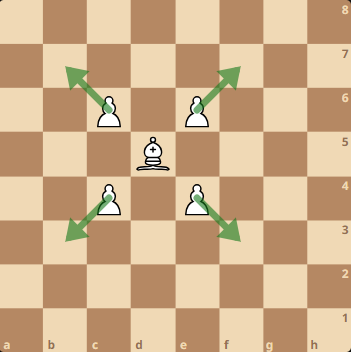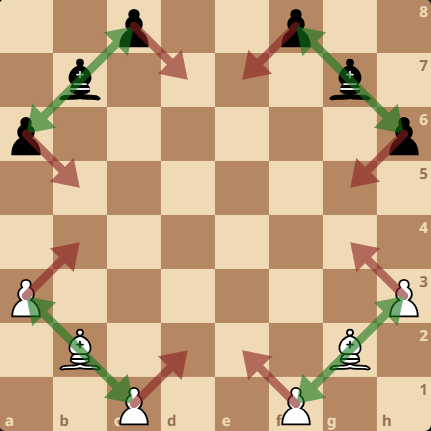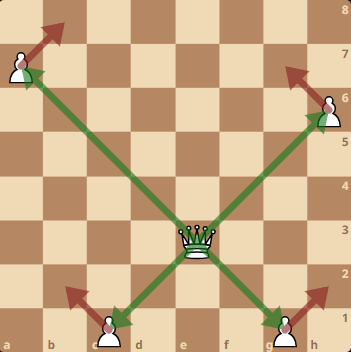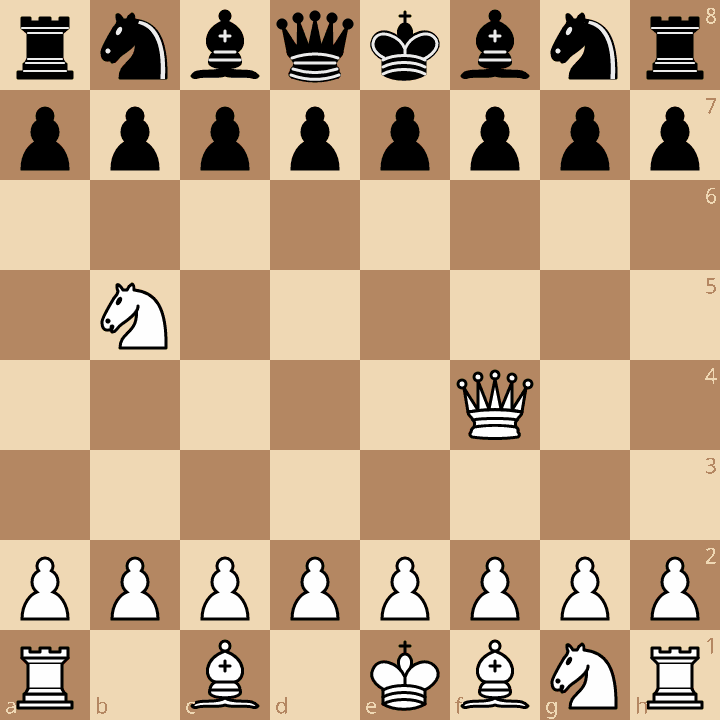Banzai Chess
Banzai Chess was developed by Vincenzo Rapisardi and some friends as a way to make classical chess more dynamic and creative.
There may be some similarities with Dynamo Chess or other 'Push based Variants', even though they were not intentional. As often happens, different people can get similar or even identical ideas. When Banzai Chess was developed we had little cognition about the ocean of chess variants out there. Our only source of inspiration was the joy of creating something enjoyable and beautiful.
Banzai introduces a fresh perspective to the game of chess, encouraging players to approach the game with more creativity and freedom. Its few simple rules unlock a realm of tactical and strategic possibilities, while maintaining the essence of regular chess.
For those seeking a novel thrilling challenge within the framework of traditional chess, Banzai is a must try.
Rules
The game is played with a normal set of pieces, from the normal starting setup.
Pieces have the same movement as in standard chess, but they can also move to squares occupied by friendly pieces.
Only 5 things change compared to standard chess:
- Push Rule - new
- Bounce Rule - new
- Pawn 2 Steps Rule - enhanced
- Pawn En Passant Rule - enhanced
- Pawn Promotion Rule - enhanced
PUSH
The first and main addition is the Push Rule.
1) Pieces can move to a square occupied by other friendly pieces, pushing them.
The pushed piece is moved to an adjacent square according to the direction of the initial piece's movement.
To execute a push the destination square must be unoccupied. It is not possible to capture while pushing.
To see the destination square simply follow the direction of the initial piece's movement and the position of the pieces on the board.
-
Each piece pushes in the same way it moves, except knights which push diagonally.
Visual rapresentation of all the different push directions.







BOUNCE
The second addition, the Bounce Rule, is a sub-rule of the Push Rule. In fact, only a pushed piece can bounce.
2) A piece on the edge pushed diagonally can bounce inward.
The bounce operates as a push, meaning the piece will move one square if that square is empty, but with a new trajectory.
-
The bounce direction is simply the push direction reflected towards the inside of the chessboard.
Visual rapresentation of all the different bounce directions.


Bounce directions clockwise and counterclockwise Queen in action with push and bounce directions




BANZAI PAWNS
The third and final addition concerns pawns' mobility and promotion. The following rules are just an adjustment of the existing ones.
3) Pawns can advance 2 steps, even if they have already moved, as long as they are on their respective first two ranks colorwise.
4) Pawns can perform the En Passant capture even on the third and sixth ranks.
5) Pawns that reach promotion via push (or bounce) cannot become queens.
Visual Rapresentation of the Pawn 2 Steps Rule enhanced


Summing up, these are the Rules of Banzai Chess:
- Pieces can move to a square occupied by other friendly pieces, pushing them.
- A piece on the edge pushed diagonally can bounce inward.
- Pawns on the respective first 2 ranks can always advance 2 steps.
- Pawns can capture En Passant also on the third and sixt rank.
- Pawns pushed to Promotion can only Underpromote.
Additionally, it may be good to know that:
- A pinned piece can't move but can still be pushed.
- A king in check can push and be pushed.
- A piece in the corner can't be pushed.
Note that these are not real rules but rather effects of the game logic.
Notes
There is no way to play this variant online yet, but you can still play Banzai with anyone over a real chessboard!
For taking track of your games you can use the standard (algebric) chess notation.
 This 'user submitted' page is a collaboration between the posting user and the Chess Variant Pages. Registered contributors to the Chess Variant Pages have the ability to post their own works, subject to review and editing by the Chess Variant Pages Editorial Staff.
This 'user submitted' page is a collaboration between the posting user and the Chess Variant Pages. Registered contributors to the Chess Variant Pages have the ability to post their own works, subject to review and editing by the Chess Variant Pages Editorial Staff.
By Vincenzo Rapisardi.
Last revised by Vincenzo Rapisardi.
Web page created: 2024-04-18. Web page last updated: 2024-04-18